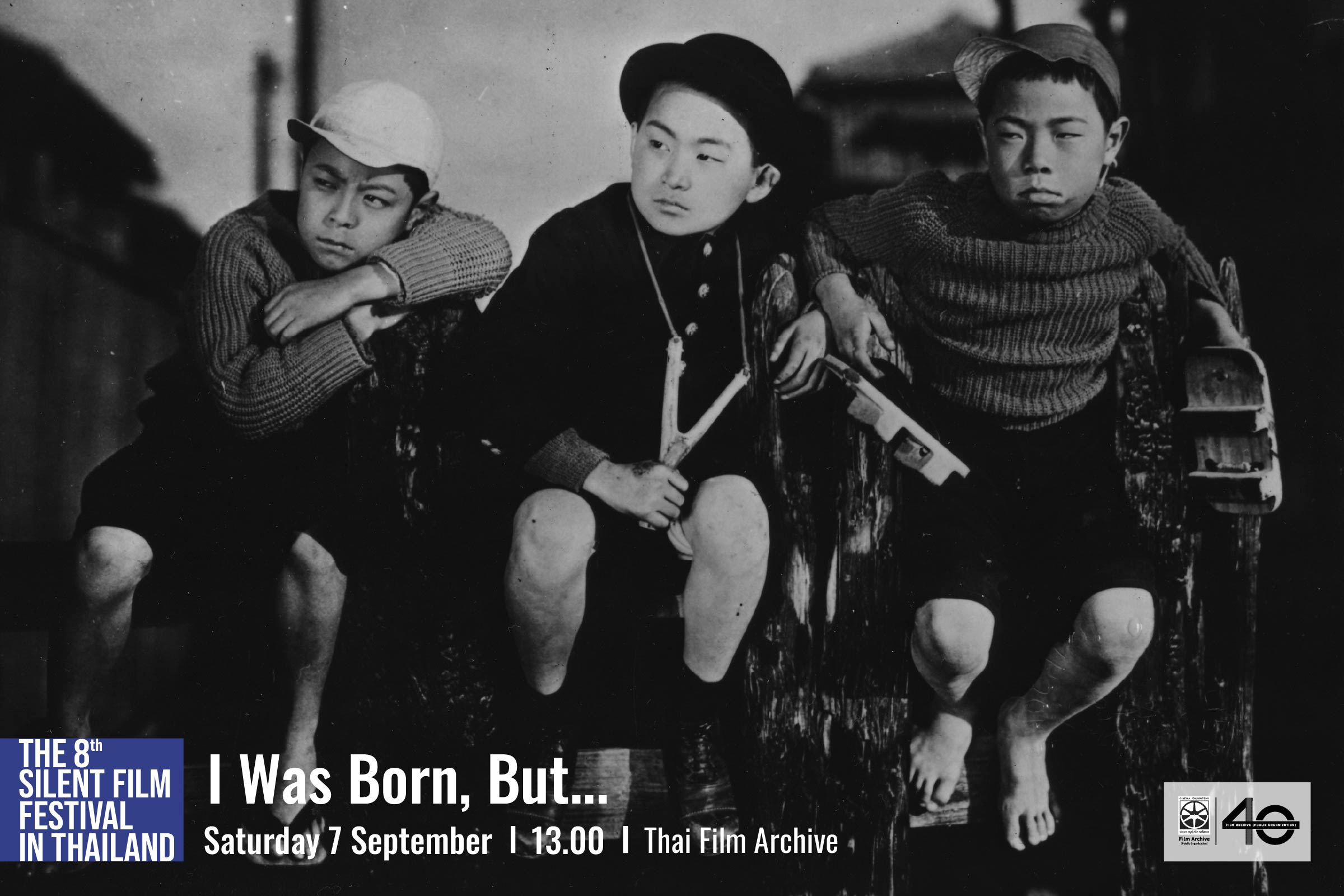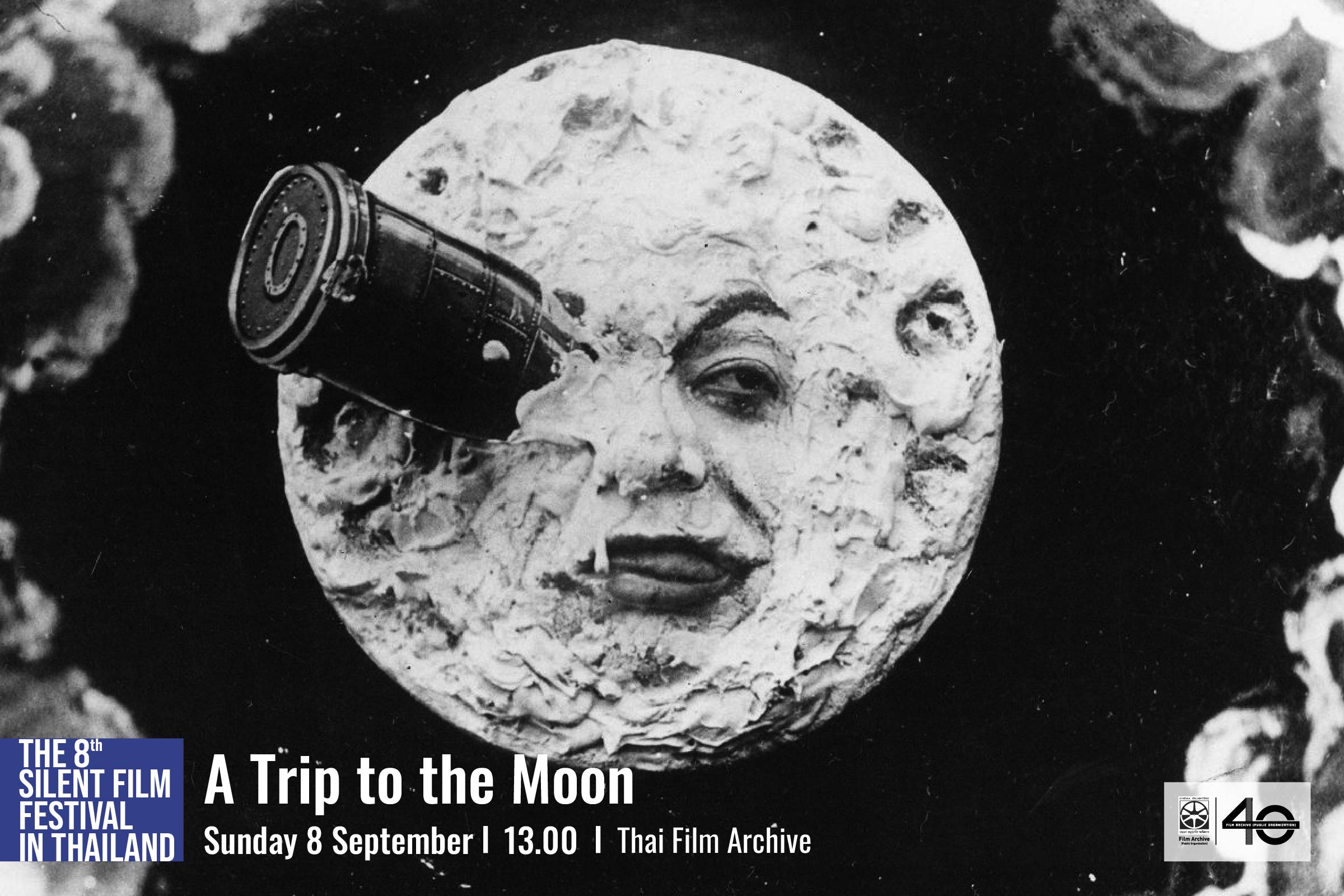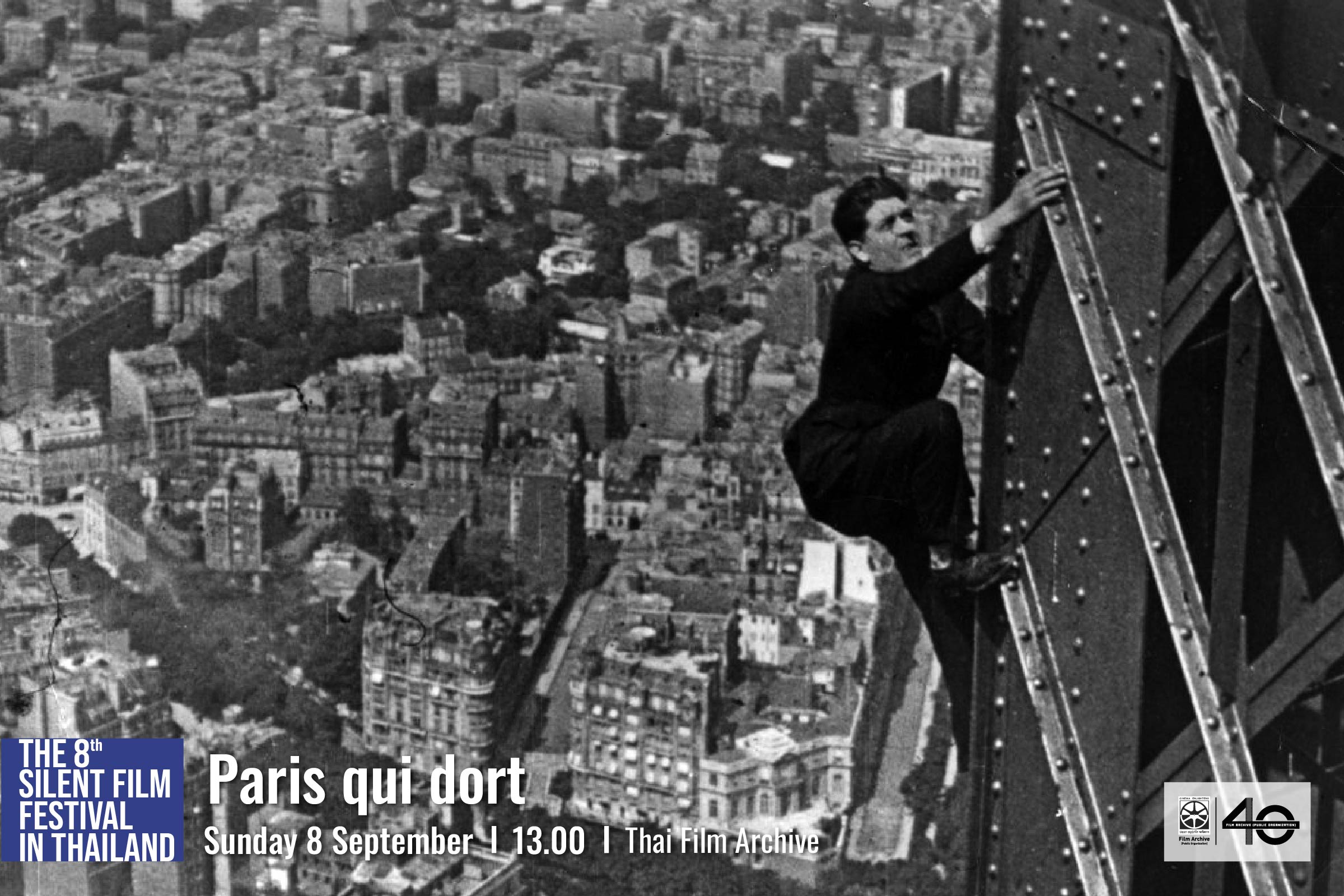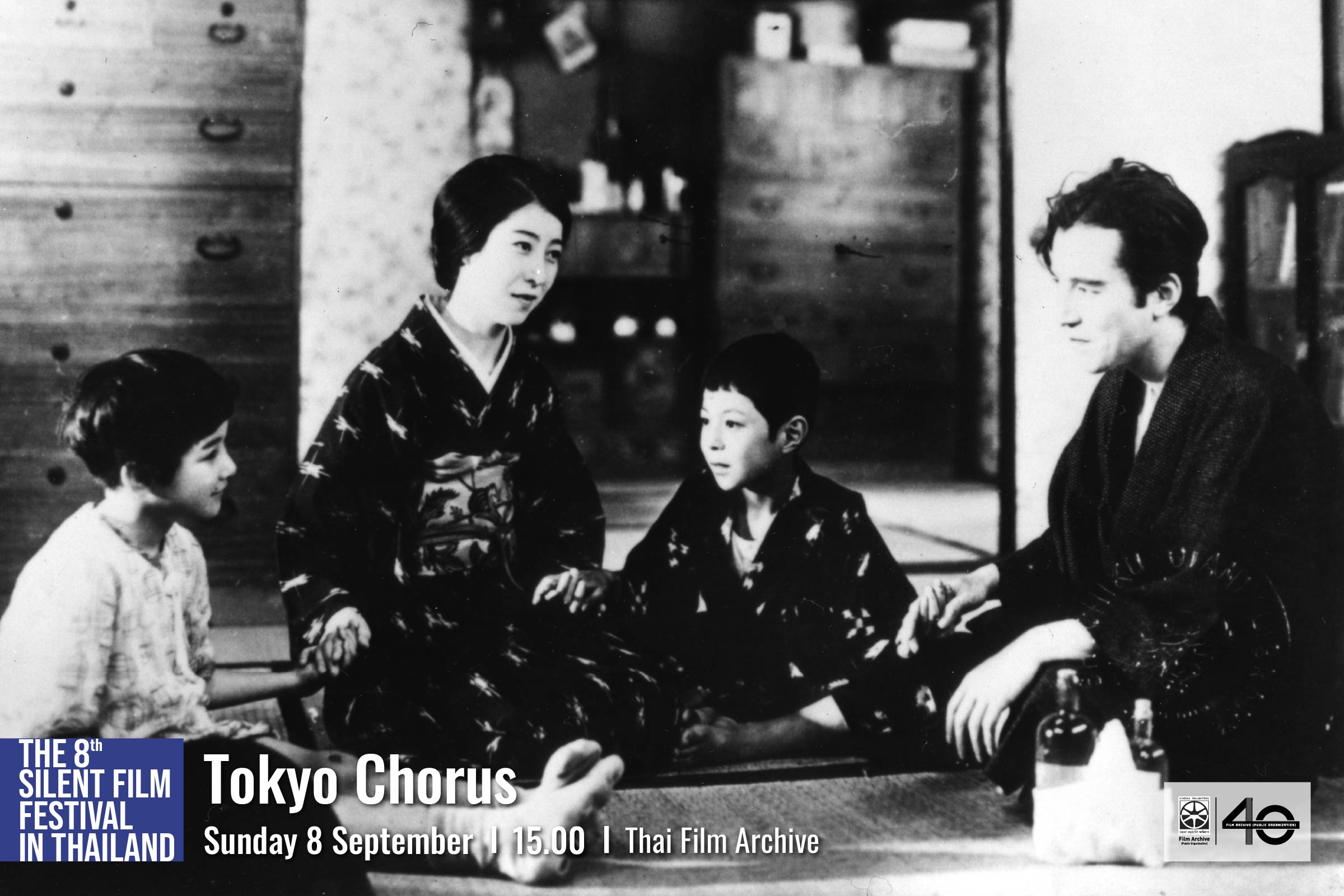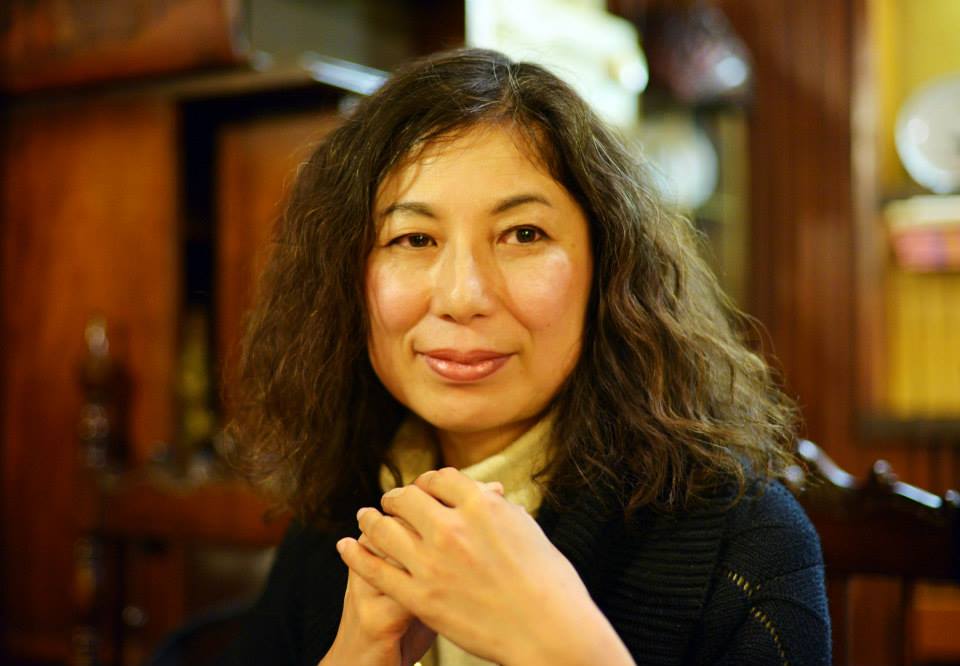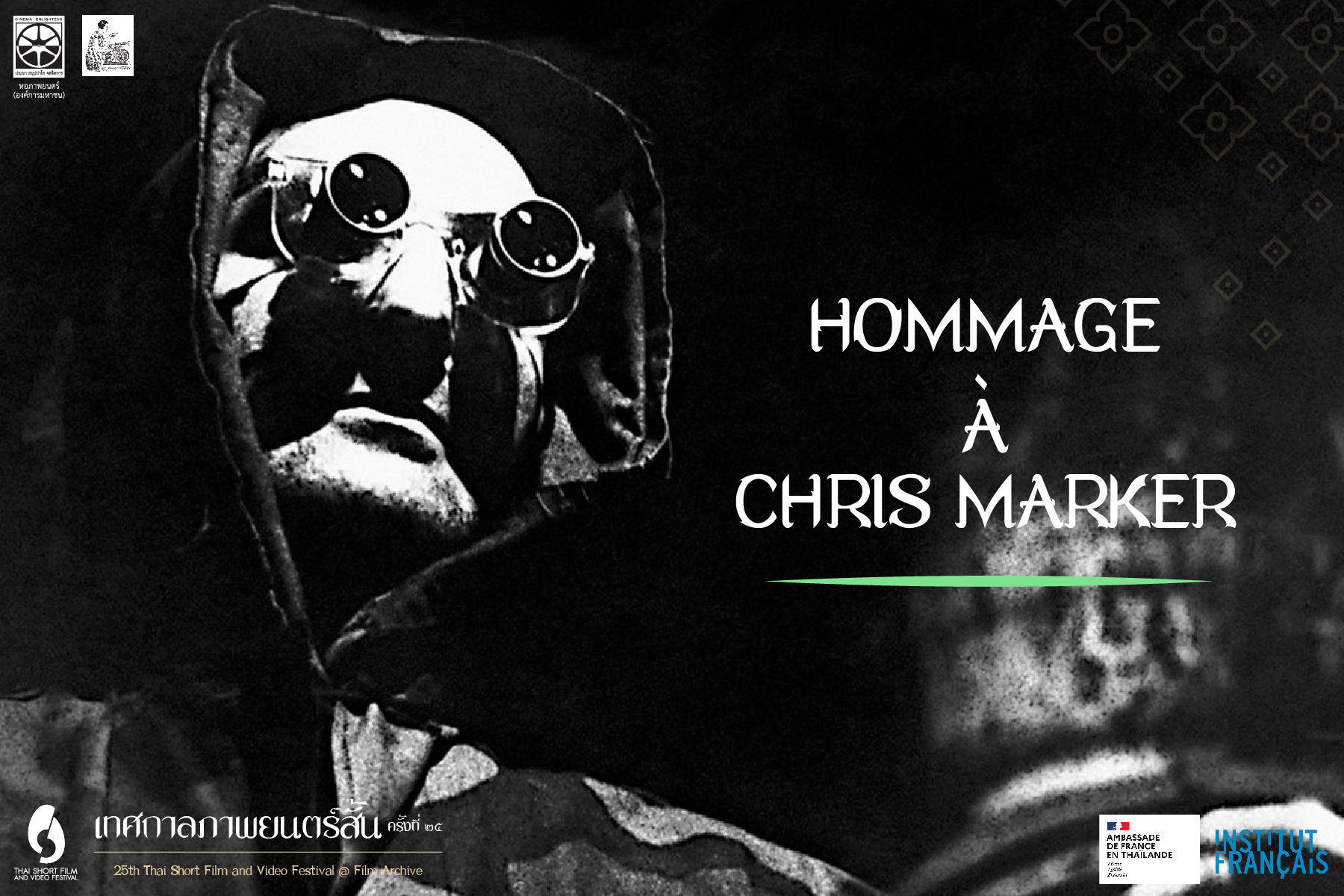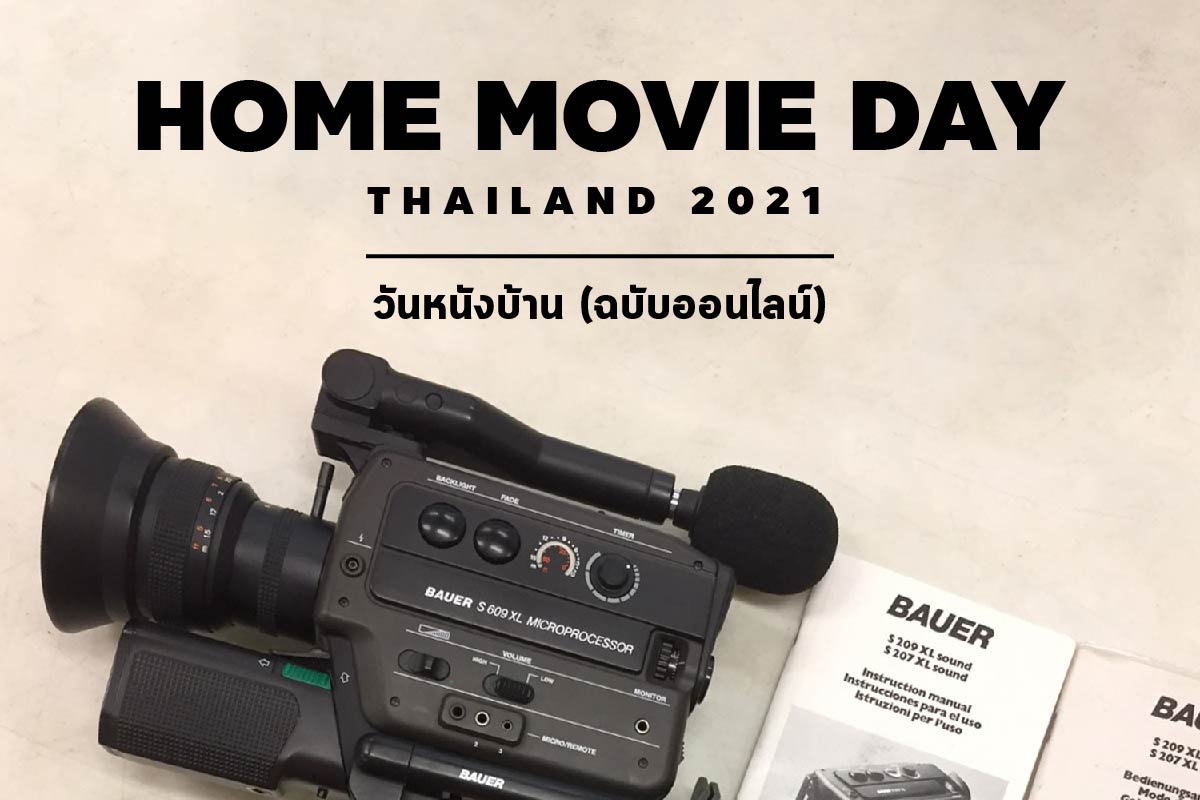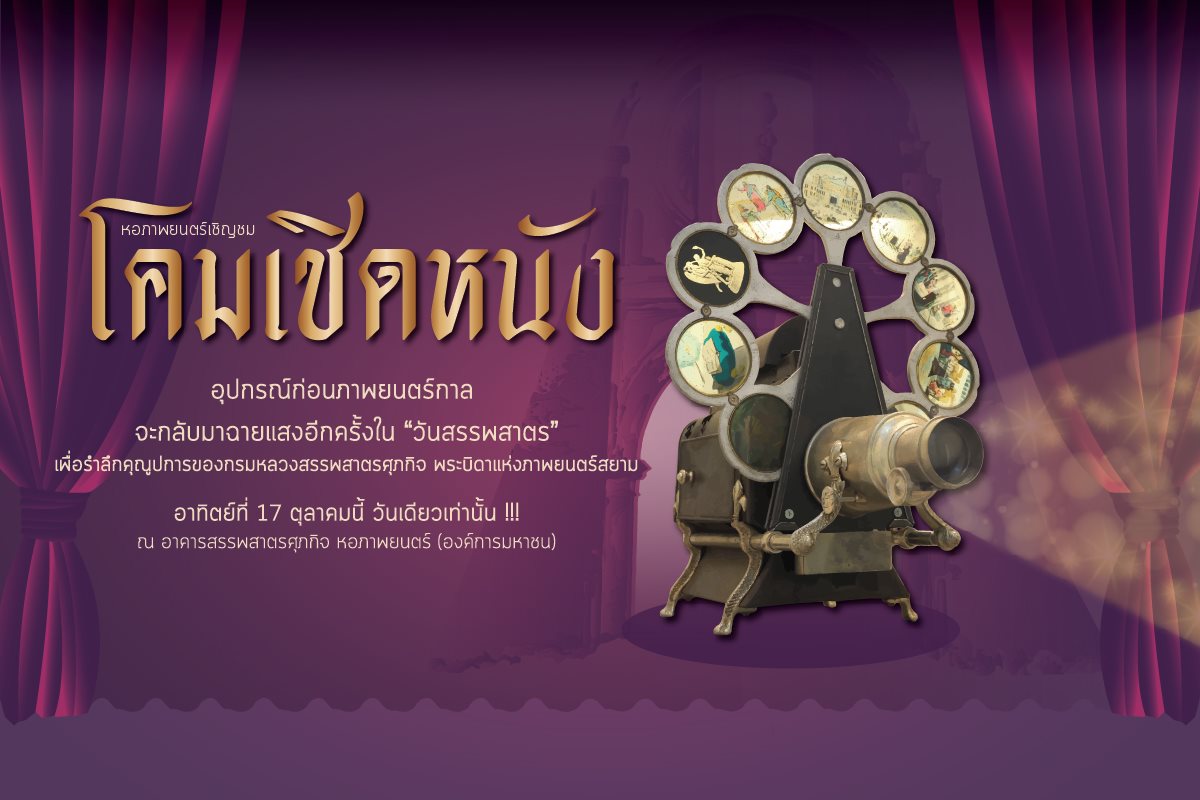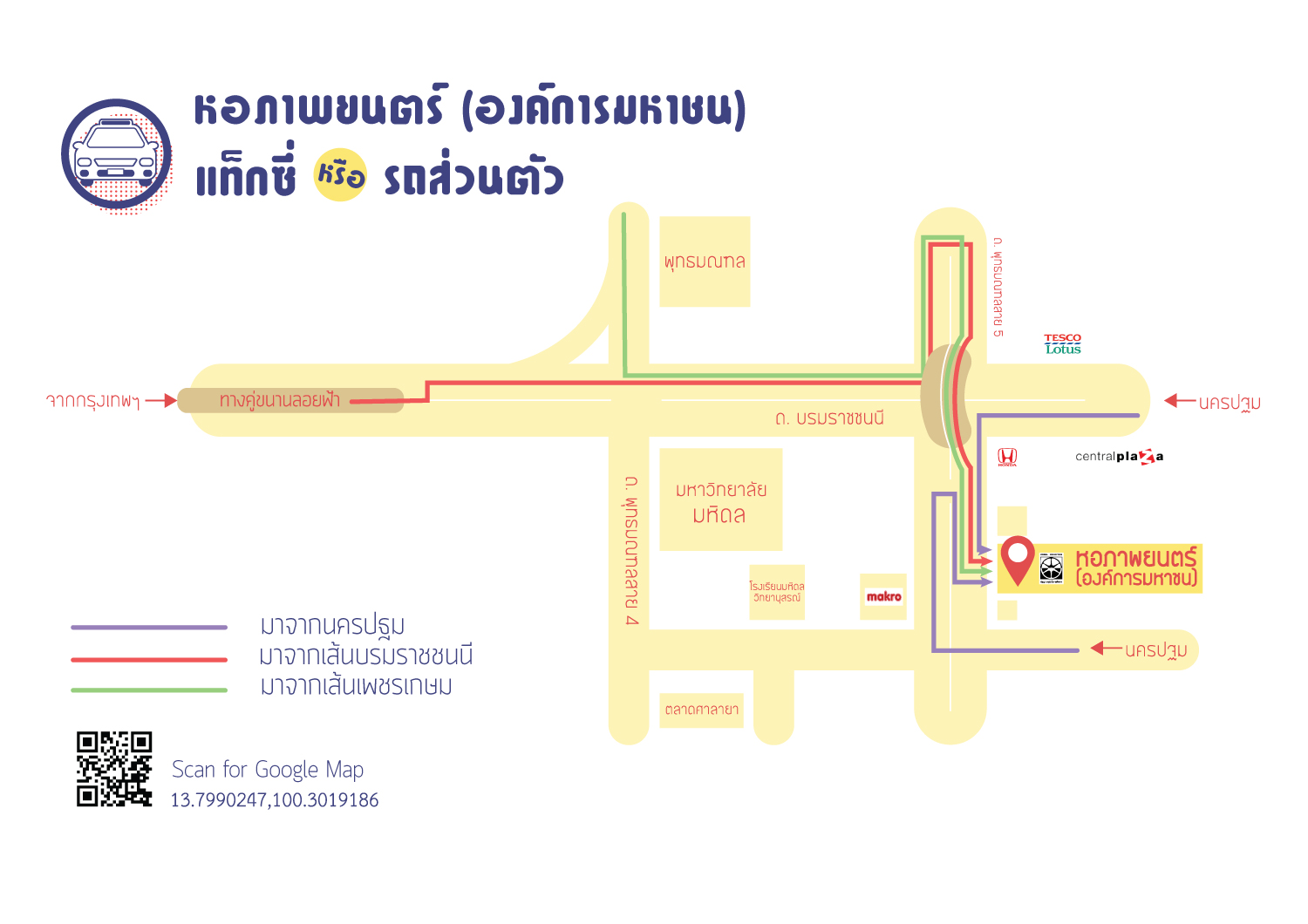เทศกาลภาพยนตร์เงียบ ร่วมฉลองวันเกิดปีที่ 40 ของหอภาพยนตร์
เทศกาลภาพยนตร์เงียบ ประเทศไทย จัดขึ้นครั้งแรกเมื่อปี 2557 ซึ่งเป็นปีที่หอภาพยนตร์ครบรอบ 30 ปี และด้วยความโดดเด่นเป็นเอกลักษณ์ของเทศกาล ทำให้มีมิตรรักแฟนหนังสนใจและให้การสนับสนุน หอภาพยนตร์จึงดำเนินการจัดเทศกาลนี้มาอย่างต่อเนื่อง และแม้ว่าจะต้องหยุดไป 3 ปี ช่วงการแพร่ระบาดของโควิด-19 แต่เมื่อได้กลับมาจัดอีกครั้งเมื่อปีที่แล้ว เทศกาลภาพยนตร์เงียบก็ยังได้รับกระแสตอบรับเป็นอย่างดี
ในปีนี้ ที่หอภาพยนตร์กำลังจะมีอายุครบรอบ 40 ปี ในวันที่ 7 กันยายน เทศกาลภาพยนตร์เงียบ ประเทศไทย ครั้งที่ 8 จึงร่วมฉลองด้วยการจัดขึ้นให้ตรงกับช่วงเวลาสำคัญดังกล่าว ระหว่างวันที่ 6-8 กันยายน 2567 ณ โรงภาพยนตร์ศาลาศีนิมา โรงหนังไม้ตามแบบอย่างโรงหนังเมืองไทยยุคหนังเงียบ ที่ตั้งอยู่บนชั้น 6 อาคารสรรพสาตรศุภกิจ โดยไม่เก็บค่าใช้จ่ายในการเข้าชม
หนังเงียบจากต่างประเทศที่นำมาจัดฉายในปีนี้ จะมีตั้งแต่หนึ่งในหนังดังที่สุดของยุคหนังเงียบอย่าง A Trip to the Moon (2445) โดย Georges Méliès ผู้พาโลกภาพยนตร์ไปเหยียบดวงจันทร์เป็นครั้งแรก Paris qui dort (2468) โดย René Clair ซึ่งสะกดนครปารีสที่สวยงามให้หลับใหล Secrets (2467) ผลงานของ Frank Borzage หนังรักคลาสสิกที่ยืนยันว่า ความรักคือการให้อภัย ไปจนถึงผลงาน 2 เรื่องของผู้กำกับชื่อดังชาวญี่ปุ่น Yasujiro Ozu ที่จะฉายในรูปแบบฟิล์ม 35 มม. เรื่อง Tokyo Chorus (2474) ที่จะทำให้เราหวนไห้ถึงความฝันในวัยเด็กที่ห่างไกลจากปัจจุบันที่เป็น และ I was Born, but (2475) เมื่อเด็กน้อยได้เรียนรู้ความซับซ้อนของชีวิตมนุษย์เงินเดือนผ่านพ่อของตัวเอง
นอกจากนี้ยังมีผลงานอนุรักษ์โดยหอภาพยนตร์สวีเดน หน่วยงานแรก ๆ ที่สนับสนุนการจัดตั้งหอภาพยนตร์ไทยจนสำเร็จเมื่อ 40 ปีที่แล้ว เป็นหนังเงียบเขย่าขวัญ 2 เรื่อง คือ The Phantom Carriage (2464) โดย Victor Sjöström เรื่องของรถม้าลึกลับที่มอบบทเรียนชีวิตแก่หนุ่มสำมะเลเทเมา และ Häxan : Witchcraft Through the Ages (2465) โดย Benjamin Christensen ที่พาไปสำรวจความเชื่อเรื่องแม่มด ปีศาจ ซาตาน ตั้งแต่อดีต
สำหรับผู้ที่จะมาประกอบภาพยนตร์เงียบเหล่านี้แบบสด ๆ ได้แก่ Mie Yanashita นักเปียโนชาวญี่ปุ่น ที่เคยมาแสดงในงานเทศกาลครั้งแรก และ Matti Bye นักเปียโนชาวสวีเดน ผู้ที่มีผลงานการแสดงประกอบภาพยนตร์เงียบมาแล้วทั่วโลก
และที่พิเศษสุด สำหรับการเฉลิมฉลอง 40 ปีหอภาพยนตร์ เทศกาลภาพยนตร์เงียบได้เตรียมโปรแกรมพิเศษ ชมสยามผ่านกรุหนังกรมรถไฟหลวง โดยนำผลงานบางส่วนจากกรุของกองภาพยนตร์เผยแผ่ข่าว กรมรถไฟหลวง สมัยรัชกาลที่ 7 ซึ่งถือเป็นกรุฟิล์มสำคัญที่มีส่วนให้เกิดการจัดตั้งหอภาพยนตร์ มาเรียบเรียงและจัดฉายประกอบการบรรเลงดนตรีสดของวงกอไผ่ นำโดย อานันท์ นาคคง ผู้เคยเล่นดนตรีประกอบการฉายหนังเงียบของหอภาพยนตร์มาตั้งแต่ยุคเริ่มต้น
ตารางการจัดฉาย Screening Schedule
ณ โรงภาพยนตร์ศาลาศีนิมา ชั้น 6 อาคารสรรพสาตรศุภกิจ หอภาพยนตร์ (องค์การมหาชน)
At Sala Cinema, Thai Film Archive
ศุกร์ที่ 6 ก.ย. Friday 6 September
17.00 Secrets (USA / 1924 / 108 min)*
<<สำรองที่นั่ง>>
19.00 Häxan: Witchcraft Through the Ages (Sweden / 1922 / 106 min)**
<<สำรองที่นั่ง>>
เสาร์ที่ 7 ก.ย. Saturday 7 September
13.00 I Was Born, But... (Japan / 1932 / 91 min)*
<<สำรองที่นั่ง>>
15.00 The Phantom Carriage (Sweden / 1921 / 106 min)**
<<สำรองที่นั่ง>>
17.30 ชมสยามผ่านกรุหนังกรมรถไฟหลวง See Siam through the Royal State Railway Film Collection (Thailand /1926 - 1932 / TBC) ***
<<สำรองที่นั่ง>>
อาทิตย์ที่ 8 ก.ย. Sunday 8 September
13.00 A Trip to the Moon (France / 1902 / 16 min) + Paris qui dort (France / 1925 / 59 min)**
<<สำรองที่นั่ง>>
15.00 Tokyo Chorus (Japan / 1931 / 90 min)*
<<สำรองที่นั่ง>>
*Accompanied by บรรเลงดนตรีประกอบโดย Mie Yanashita
**Accompanied by บรรเลงดนตรีประกอบโดย Matti Bye
***Accompanied by บรรเลงดนตรีประกอบโดย วงกอไผ่ Korphai Band
เรื่องย่อ
Secrets
(USA / 1924 / 108 min)
Director: Frank Borzage
Cast: Norma Talmadge, Eugene O’Brien, Claire McDowell
Cinematographer: Tony Gaudio
Screenplay: Frances Marion, May Edginton, Rudolph Besier
Production Company: Associated First National Pictures
Print Source: Cineteca di Bologna
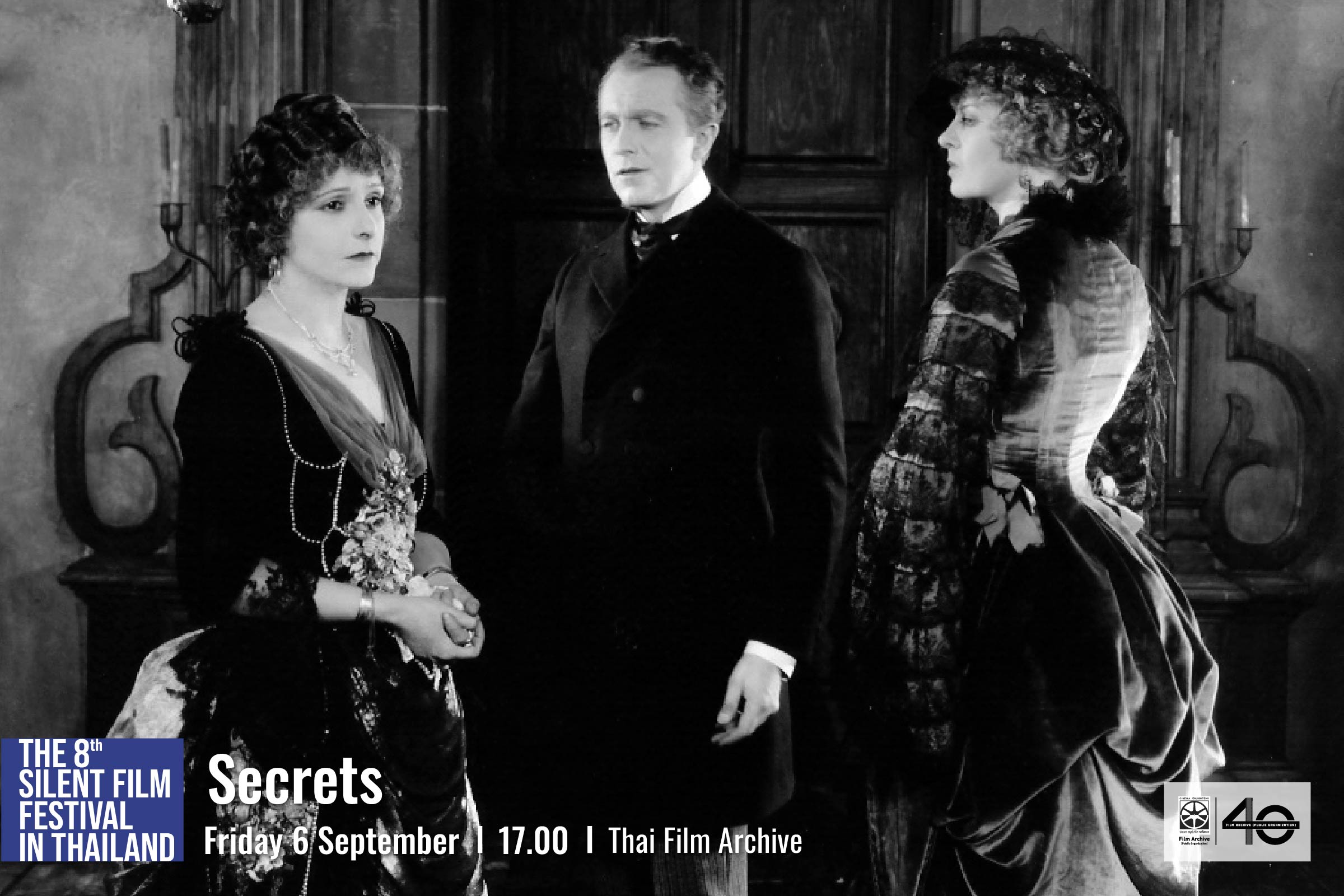
Mary Carlton, devastated by her husband John's illness, turns to her old diary for comfort. The diary takes audiences back to 1865, when young Mary, from a wealthy family, fell in love with John, a working-class employee. Their love faces fierce opposition from her strict parents, who forbid her from seeing him. Defying her family's wishes, Mary elopes to America with John, where they face a life of poverty and troubles. As time goes on, Mary discovers John's affair with another woman, further testing their romantic love.
แมรี่ คารล์ตัน ทุกข์ใจอย่างยิ่งต่ออาการป่วยของจอห์นผู้เป็นสามี เธอกลับไปอ่านอนุทินเก่าๆ เพื่อปลอบประโลมใจ อนุทินดังกล่าวนำคนดูกลับไปปี 1865 เมื่อแมรี่ หญิงสาวจากครอบครัวร่ำรวย ตกหลุมรักจอห์นลูกจ้างชนชั้นแรงงาน ความรักของทั้งคู่ถูกคัดค้านอย่างหนักจากพ่อแม่ที่เข้มงวดของแมรี่ ในที่สุดแมรี่ตัดสินใจหนีตามจอห์นไปที่สหรัฐอเมริกา และต้องไปเผชิญกับความยากจนและปัญหา และเมื่อเวลาผ่านไปแมรี่ยังพบว่าจอห์นมีผู้หญิงอื่นซึ่งกลายเป็นบททดสอบความรักของทั้งคู่
Screening: Friday 6 September (17.00)
Accompanied by Mie Yanashita
*******************************
Häxan : Witchcraft Through the Ages
(Sweden / 1922 / 106 min)
Director: Benjamin Christensen
Cast: Maren Pedersen, Karen Winther, Aage Hertel, Clara Pontoppidan, Tora Teje, and Benjamin Christensen
Cinematographer: Johan Ankerstjerne
Screenplay: Benjamin Christensen
Production Company: Svensk Filmindustri
Print Source: Swedish Film Institute
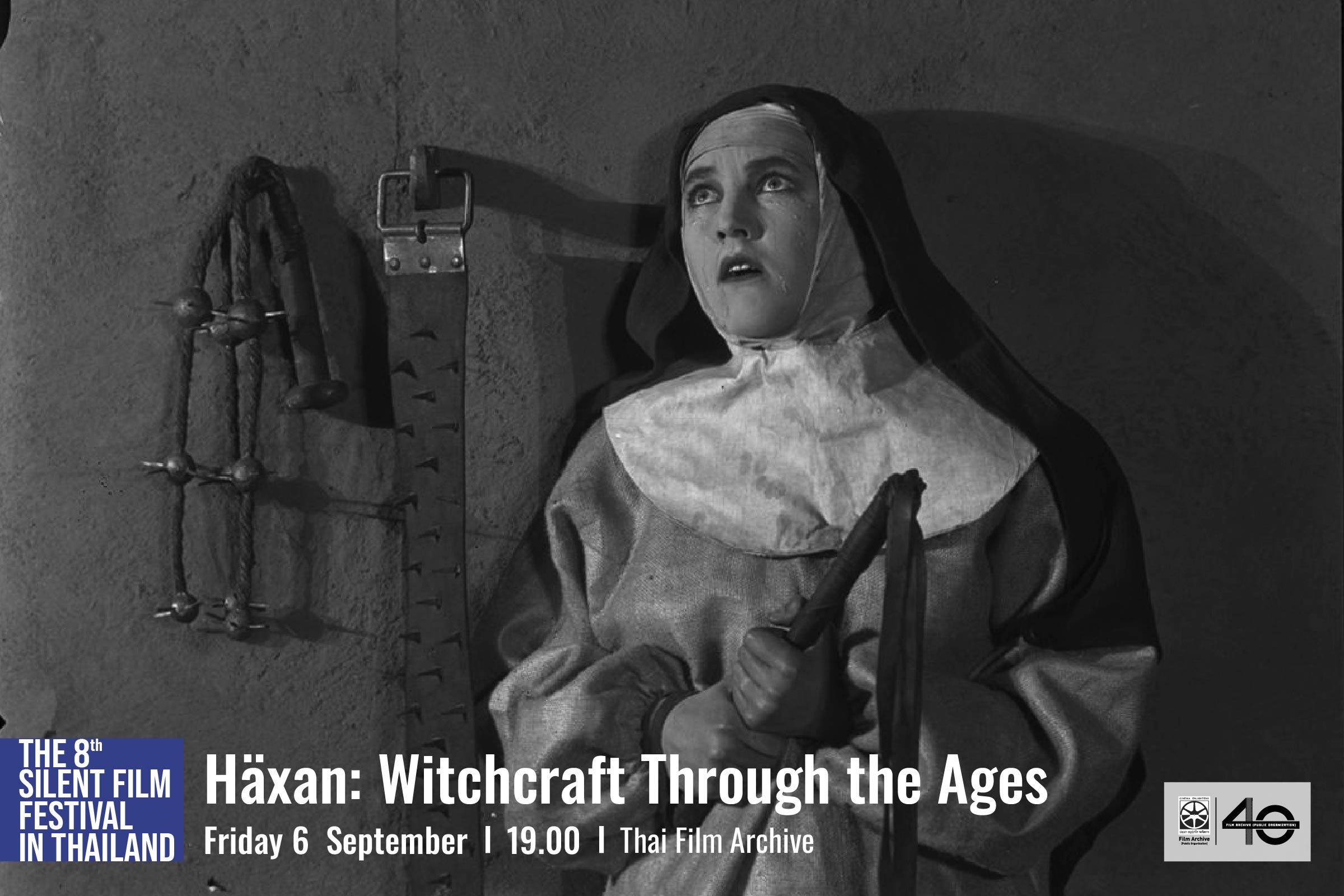
Häxan: Witchcraft Through the Ages is a groundbreaking 1922 silent horror film that explores the dark history of witchcraft, demonology, and satanism. This unique blend of documentary and fiction traces the evolution of these beliefs from ancient times through the Middle Ages to the early 20th century.
The film combines didactic lectures with vivid dramatizations, depicting the superstitions across the centuries. It also tackles themes of religious hypocrisy, sexual repression, and the brutal witch hunts of the Middle Ages.
Upon its release, it received mixed reactions. While it was a worldwide success, it faced censorship in many countries and was banned in the United States.
Häxan: Witchcraft Through the Ages เป็นหนังเงียบสยองขวัญชื่อดังของยุค ที่สำรวจประวัติศาสตร์ด้านมืดของความเชื่อเรื่องศาสตร์แม่มด ปีศาจ และซาตาน หนังนำเสนอในรูปแบบผสมผสานระหว่างสารคดีกับหนังเล่าเรื่อง ที่พาคนดูย้อนไปดูความเชื่อตั้งแต่อดีต ยุคกลาง และ ยุคต้นศตวรรษ 20
หนังผสมผสานระหว่างการสั่งสอน การเล่าเรื่องเต็มไปด้วยสีสัน นำเสนอไสยศาสตร์หลายศตวรรษ หนังยังเสนอความหลอกลวงของศาสนา ,ความรุนแรงทางเพศ และการล่าแม่มดอย่างโหดร้ายในช่วงยุคกลาง
เมื่อออกฉาย หนังได้รับคำวิจารณ์กลาง ๆ แต่กลายเป็นประสบความสำเร็จทางรายได้ไปทั่วโลก แม้จะถูกเซ็นเซอร์ในหลายประเทศและถูกห้ามฉายในสหรัฐอเมริกาก็ตาม
Screening: Friday 6 September (19.00)
Accompanied by Matti Bye
*******************************
I Was Born, But…
(Japan / 1932 / 91 min)
Director: Yasujiro Ozu
Cast: Tatsuo Saito, Tomio Aoki, Hideo Sugawara, Mitsuko Yoshikawa, and Seiichi Kato
Cinematographer: Hideo Shigehara
Screenplay: Akira Fushimi
Production Company: Shochiku
Print Source: National Film Archive of Japan
Ryoichi and Keiji’s father moves to the same neighborhood as the company executive, Iwasaki in the hopes of getting a promotion. In front of the boys, the father is as strict as can be. The boys have no doubt that their father is "the best" until they heartbrokenly find out the truth of his father's career.
I was Born, But is hailed as Yasujiro Ozu's masterpiece of silent cinema. It's a film that, despite its comedic exterior, offers profound insights into Japanese society and the complexities of family life.
เมื่อพ่อของเรียวอิจิและเคจิต้องย้ายมาอยู่บ้านใหม่ในย่านเดียวกับอิวาซากิ ประธานบริษัท ด้วยความหวังว่าจะได้เลื่อนตำแหน่ง ต่อหน้าลูกๆ พ่อเป็นคนเข้มงวดอย่างมาก สำหรับสองพี่น้อง พ่อของพวกเขา "ดีที่สุด" จนกระทั่ง พวกเขาค้นพบความจริงที่แสนเจ็บปวดเกี่ยวกับอาชีพของพ่อของเขา
I was Born, But... ได้รับการยกย่องเป็นผลงานหนังเงียบชิ้นเอกของ Yasujiro Ozu ถึงแม้ว่าหนังจะเคลือบด้วยความตลก แต่เนื้อแท้ของหนังนำเสนอชีวิตในสังคมญี่ปุ่นและความซับซ้อนของชีวิตครอบครัวได้อย่างลึกซึ้ง
Screening: Saturday 7 September (13.00)
Accompanied by Mie Yanashita
*******************************
The Phantom Carriage
(Sweden / 1921 / 106 min)
Director: Victor Sjöström
Cast: Victor Sjöström, Hilda Bergström, Astrid Holm, and Tore Svennberg
Cinematographer: Julius Jaenzon
Screenplay: Victor Sjöström
Production Company: Svensk Filmindustri
Print Source: Swedish Film Institute
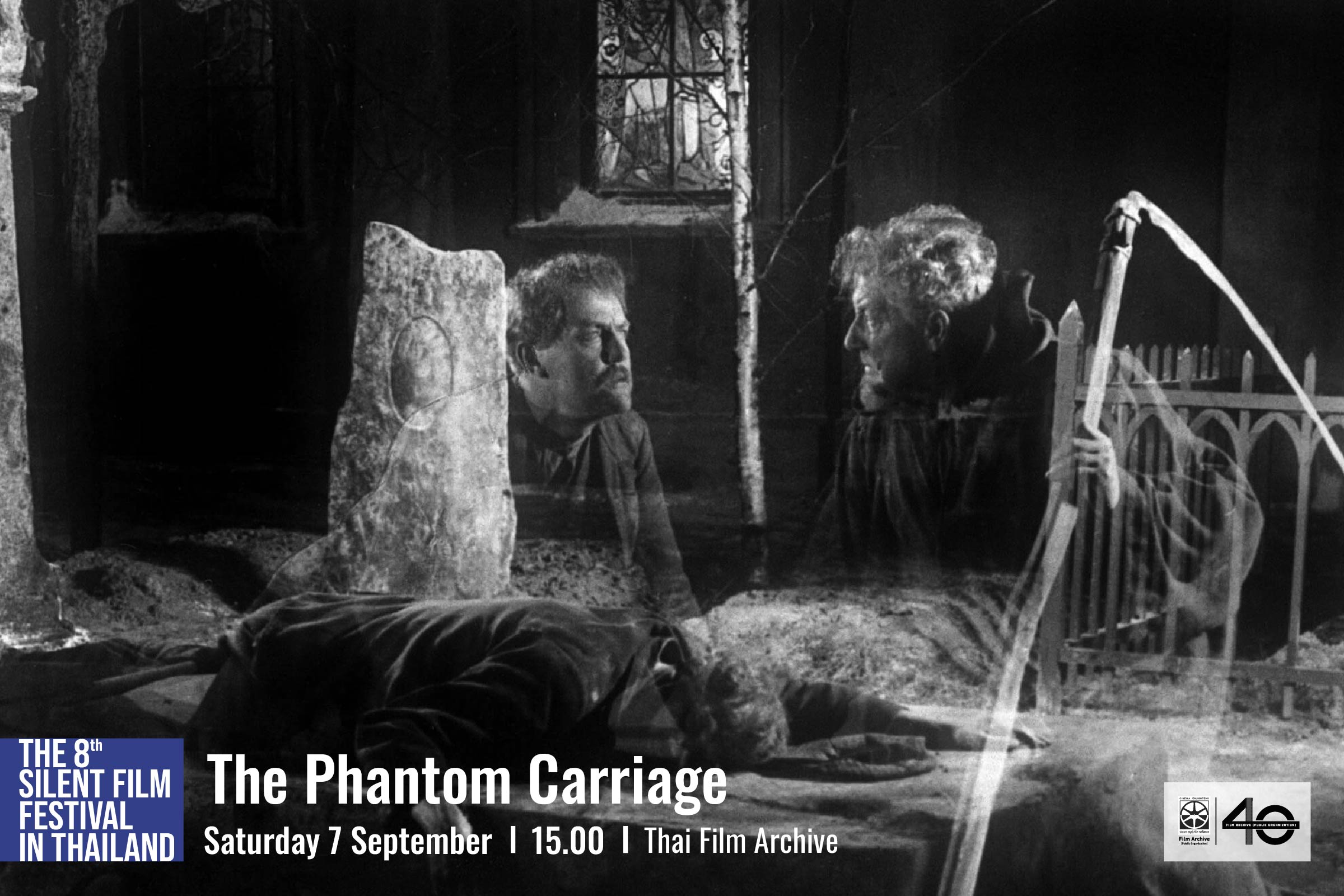
The Phantom Carriage is a haunting Swedish silent film directed by and starring Victor Sjöström, based on a novel by Selma Lagerlöf, Thy Soul Shall Bear Witness!. The Phantom Carriage was advanced and ground-breaking in both technical and narrative terms.
On New Year's Eve, David, a drunken and abusive man, is forced to confront his past sins when he encounters the ghostly driver of Death's carriage. The driver compels David to witness the suffering he has caused and to reflect on his wasted life.
This Victor Sjöström’s iconic film explores themes of guilt, redemption, and the consequences of one's choices. It's a powerful and visually striking film that has had a significant influence on subsequent Swedish cinema.
The Phantom Carriage หนังเงียบสยองขวัญของสวีเดน กำกับและแสดงนำโดย Victor Sjöström หนังดัดแปลงมาจากนิยายเรื่อง Thy Soul Shall Bear Witness! ของ Selma Lagerlöf เป็นภาพยนตร์ที่ได้รับการขนานนามว่ามีความล้ำสมัยและแปลกใหม่ทั้งในเรื่องเทคนิคและการเล่าเรื่อง
ในค่ำคืนก่อนวันปีใหม่ เดวิด ชายขี้เมาและนิยมความรุนแรงถูกบังคับให้ต้องเผชิญหน้ากับบาปในอดีตของเขา เมื่อเขามาพบกับคนขับรถลากแห่งความตาย คนขับบังคับให้เดวิดประจักษ์พยานของความทุกข์ทรมานที่เขาเป็นต้นเหตุ และได้เห็นชีวิตที่ไร้ค่าของเขา
ผลงานเรื่องดังของ Victor Sjöström พาผู้ชมไปสำรวจแก่นเรื่องของความรู้สึกผิด การแก้ไขความผิดพลาด และ ผลลัพธ์ของการกระทำของใครคนหนึ่ง หนังเต็มไปด้วยพลังและการสร้างสรรค์ภาพที่โดดเด่น และมีอิทธิพลสูงต่อวงการหนังสวีเดน
Screening: Saturday 7 September (15.00)
Accompanied by Matti Bye
*******************************
ชมสยามผ่านกรุหนังกรมรถไฟหลวง
See Siam through the Royal State Railway Film Collection
(Thai / 1926 - 1932 / TBC)
Production Company: Thai Film Archive
Print Source: Thai Film Archive
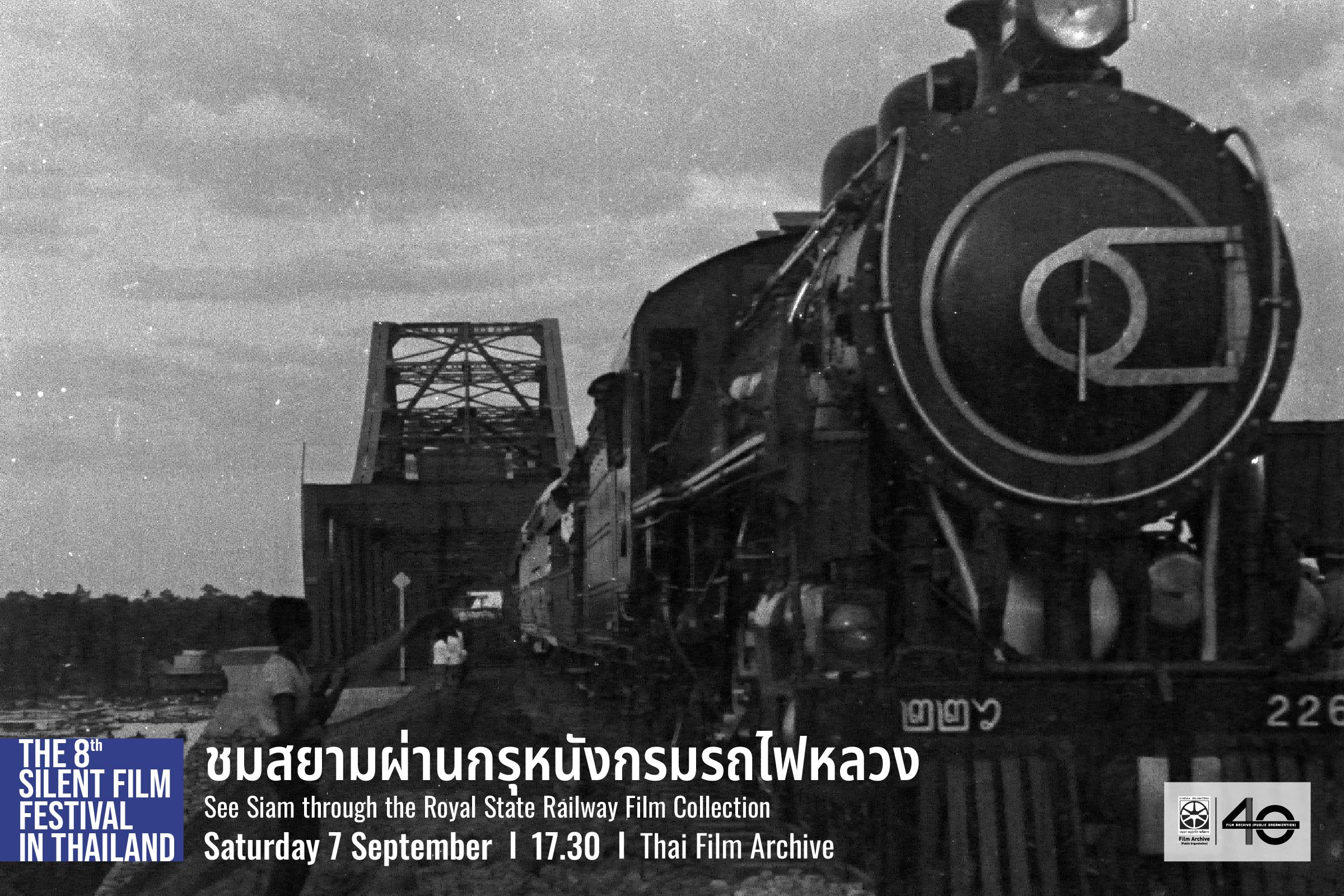
In 1922, General Prince Kamphaengphet Akarayothin, a pioneering figure in Thai cinema and the head of the Royal State Railway Department, established the Topical Film Service. This groundbreaking unit produced films to showcase government initiatives, royal events, and Thailand's tourism potential. It was one of the world's earliest state-run film departments, operating for a decade until the 1932 revolution gradually phased out its role.
Decades later, in 1981, during researching on Thai film history, Dome Sukvong discovered a forgotten collection: over 500 nitrate film reels from the Topical Film Service, hidden away in an old railway building. This remarkable discovery ignited a movement to establish a national film archive, which was realized in 1984.The discovered films, silent records of life under King Prajadhipok reign (1926-1932), were primarily the work of Luang Kolkarnchanchit, or Pao Wasuwat, a skilled cinematographer. While incomplete, these fragile fragments provide invaluable insights into Thai history.
To celebrate the Thai Film Archive's 40th anniversary, a selection of these precious films will be showcased at the 8th Silent Film Festival of Thailand. From the grandeur of King Vajiravudh's cremation ceremony to the intimate glimpses of King Prajadhipok's northern tour, and from the allure of "See Siam," a tourism masterpiece, to the engineering marvel of the Memorial Bridge, these films offer a unique window into the past. Accompanied by the live music of Korpai, the audience will experience the power of cinema to preserve and share a nation's heritage.
พ.ศ. 2465 พลเอก พระเจ้าบรมวงศ์เธอ กรมพระกำแพงเพ็ชรอัครโยธิน ผู้บัญชาการกรมรถไฟหลวง ผู้ทรงเป็นนักถ่ายภาพยนตร์สมัครเล่นคนสำคัญ ได้ทรงจัดตั้ง “กองภาพยนตร์เผยแผ่ข่าว” เพื่อหน้าที่ผลิตภาพยนตร์เผยแพร่กิจการของหน่วยงานราชการ พระราชกรณียกิจและพระราชพิธีต่าง ๆ รวมถึงภาพยนตร์ส่งเสริมการท่องเที่ยวสยาม ตลอดจนรับจ้างผลิตภาพยนตร์ให้เอกชนทั่วไป นับเป็นหน่วยงานภาพยนตร์ของรัฐแห่งแรกในสยามและเป็นแห่งแรกแห่งหนึ่งในโลก โดยมีผลงานต่อเนื่องยาวนานนับ 10 ปี จนกระทั่งเกิดการเปลี่ยนแปลงการปกครองใน พ.ศ. 2475 จึงค่อย ๆ หมดบทบาทลงไป
พ.ศ. 2524 ขณะที่ โดม สุขวงศ์ กำลังค้นคว้าข้อมูลเพื่อเขียนประวัติศาสตร์ภาพยนตร์ไทย เขาได้ค้นพบกรุฟิล์มไนเตรตของ “กองภาพยนตร์เผยแผ่ข่าว กรมรถไฟหลวง” กว่า 500 ม้วน ถูกเก็บลืมอยู่ในตู้ที่อาคารเก่าโรงพิมพ์รถไฟ ส่งผลให้เกิดการเรียกร้องให้ทางราชการจัดตั้งหอภาพยนตร์เพื่อทำหน้าที่อนุรักษ์ภาพยนตร์ในประเทศไทยจนสำเร็จใน พ.ศ. 2527 โดยฟิล์มที่ค้นพบล้วนเป็นผลงานที่ถ่ายทำไว้ในสมัยรัชกาลที่ 7 ช่วง พ.ศ. 2469 – 2475 ซึ่งมีหลวงกลการเจนจิต หรือ เภา วสุวัต เป็นหัวหน้าช่างถ่ายภาพและภาพยนตร์ และแม้ทั้งหมดจะเป็นเพียงเศษที่ไม่สมบูรณ์ แต่ก็ยังนับได้ว่ามีคุณูปการมหาศาลต่อการศึกษาประวัติศาสตร์ด้านต่าง ๆ ของไทย
เทศกาลภาพยนตร์เงียบ ประเทศไทย ได้คัดเลือกผลงานบางส่วนจากกรุทรงคุณค่านี้ เช่น พระราชพิธีถวายพระเพลิงพระบรมศพ รัชกาลที่ 6 พ.ศ. 2469, การเสด็จเลียบเมืองเหนือของรัชกาลที่ 7 พ.ศ. 2470, ภาพยนตร์ประชาสัมพันธ์การท่องเที่ยว “ชมสยาม” พ.ศ. 2473, การก่อสร้างสะพานปฐมบรมราชานุสรณ์ พ.ศ. 2474 ฯลฯ มาเรียบเรียงเพื่อจัดฉายเนื่องในวาระครบ 40 ปีหอภาพยนตร์ เพื่อให้ผู้ชมได้ประจักษ์ถึงความสำคัญแห่งการบันทึกประวัติศาสตร์ชาติด้วยฟิล์มภาพยนตร์ของกรมรถไฟหลวง ที่หอภาพยนตร์ได้เก็บรักษาไว้ พร้อมการแสดงดนตรีสดโดยวงกอไผ่
Screening: Saturday 7 September (17.30)
Accompanied by KorPhai Band
*******************************
A Trip to the Moon
(France / 1902 / 16 min)
Director: Georges Méliès
Cast: Georges Méliès, Henri Delannoy, Bleuette Bernon, François Lallement
Cinematographer: Théophile Michault, Lucien Tainguy
Screenplay: Georges Méliès
Production Company: STAR FILM
Print Source: Cinémathèque Française
Six scholars, members of the Astronomers’ Club, set off on an expedition to the moon. They travel in a bullet-shaped rocket fired into space by a giant cannon. After arriving on the moon safe and sound, they meet its inhabitants, the Selenites, escape their king and return to earth in their rocket which, after falling into the ocean, is fished out by a sailor. Applause, decorations, and a triumphant parade for the six heroes of the first outer-space adventure in the history of cinema.
นักวิชาการชมรมดาราศาสตร์ 6 คน ร่วมกันเดินทางไปยังดวงจันทร์ ด้วยจรวดหัวกระสุนที่ถูกยิงจากปืนใหญ่ขนาดยักษ์ เมื่อถึงดวงจันทร์ พวกเขาถูกไล่ล่าโดยชาวเซเลไนต์ ก่อนที่จะหนีกลับมายังโลกอย่างปลอดภัย ชาวโลกจึงร่วมกันเฉลิมฉลองให้วีรบุรุษทั้งหกคนที่ได้ผจญภัยในอวกาศครั้งแรกของโลกภาพยนตร์
Screening: Sunday 8 September (13.00)
Accompanied by Matti Bye
*******************************
Paris qui dort
(France / 1925 / 59 min)
Director: René Clair
Cast: Henri Rollan, Madeleine Rodrigue, Albert Préjean, Charles Martinelli
Cinematographer: Maurice Desfassiaux, Paul Guichard
Screenplay: René Clair
Print Source: Fondation Jeromeseydoux Pathe - Succession René Clair
4K restoration by the Fondation Jérôme Seydoux-Pathé in 2018 with support from the CNC, at L’Immagine Ritrovata (Bologna)
Paris qui dort is a 1925 French silent comedy film directed by René Clair. It's considered a pioneering work of science fiction and surrealist cinema.
The film revolves around a mad scientist who develops a "crazy ray" capable of freezing people in their tracks. When he accidentally unleashes the ray on Paris, the entire city is immobilized. A small group of people, immune to the ray, find themselves alone in a frozen metropolis.
Paris qui dort หนังเงียบตลกปี 1925 ผลงานการกำกับของ René Clair หนังได้รับการยกย่องว่าเป็นต้นแบบหนังนิยายวิทยาศาสตร์และหนังเหนือจริง
หนังเล่าเรื่องนักวิทยาศาสตร์เพี้ยนๆ ที่พัฒนา "รังสีความเพี้ยน" ที่จะทำให้คนหยุดนิ่ง เมื่อเขาบังเอิญปล่อยรังสีดังกล่าวในปารีส ทั้งเมืองจึงหยุดนิ่ง มีเพียงกลุ่มคนเล็กๆ ที่มีภูมิคุ้มกันรังสี และได้เห็นทั้งเมืองหยุดนิ่ง
Screening: Sunday 8 September (13.00)
Accompanied by Matti Bye
*******************************
Tokyo Chorus
(Japan / 1931 / 90 min)
Director: Yasujiro Ozu
Cast: Tokihiko Okada, Emiko Yagumo, Hideo Sugawara, Hideko Takamine, Tatsuo Saito, Choko Iida, Reiko Tani, Kemichi Miyajima, Isamu Yamaguchi
Cinematographer: Hideo Shigehara
Screenplay: Kôgo Noda, Komatsu Kitamura
Production Company: Shochiku Kinema
Print Source: National Film Archive of Japan
Tokyo Chorus is a seminal work by Yasujirō Ozu that offers a poignant and realistic portrayal of middle-class life in 1930s Tokyo.
The film follows the life of Shinji Okajima, a young man who is initially depicted as a mischievous schoolboy. As the story progresses, we see Okajima grow up and enter the workforce as an insurance salesman. His life becomes increasingly complex as he balances the demands of his job, his family, and the pressures of societal expectations.
The film offers a microcosmic view of Japanese society, exploring themes of family, work, morality, and the challenges of everyday life. Ozu's signature understated style and meticulous attention to detail create a powerful and resonant portrait of human experience.
Tokyo Chorus เป็นผลงานชิ้นเยี่ยมของ Yasujiro Ozu ที่นำเสนอภาพชีวิตชนชั้นกลางในยุคทศวรรษ 1930 ในโตเกียวได้อย่างแหลมคมและสมจริง
หนังเล่าเรื่องของชินจิ โอกาจิมา ช่ายหนุ่มนิสัยร่าเริงในวัยเด็ก ที่เติบโตขึ้นเข้าสู่โลกการทำงานในฐานะคนขายประกัน ชีวิตของเขาซับซ้อนเพิ่มขึ้น เมื่อเขาจะต้องสร้างสมดุลระหว่างงาน ครอบครัว และ แรงกดดันจากความคาดหวังของสังคม
หนังนำเสนอชีวิตเล็กๆ ในสังคมญี่ปุ่น เพื่อสำรวจแก่นเรื่องของครอบครัว การงาน ศีลธรรม และ อุปสรรคในแต่ละวัน ลายเซ็นต์ของ Ozu เรื่องของรูปแบบการนำเสนอที่เรียบง่าย และลงรายละเอียดในชีวิตเป็นไปอย่างทรงพลังและบอกเล่าประสบการณ์ของมนุษย์ได้อย่างแหลมคม
Screening: Sunday 8 September (15.00)
Accompanied by Mie Yanashita
*******************************
ประวัตินักดนตรี
Matti Bye
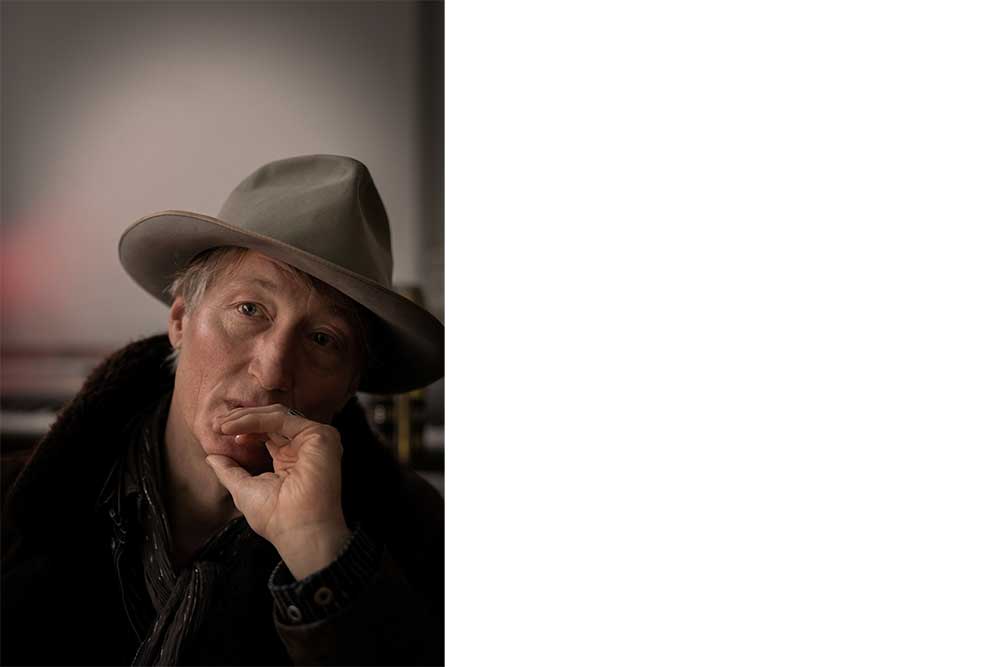
Matti Bye, one of a Swedish most esteemed composers and pianists, has dedicated his career to the unique craft of composing and performing music for silent films. With a career spanning over 35 years, Bye has become a pivotal figure in the silent film accompaniment scene, blending contemporary musical approaches with a deep sensitivity to visual storytelling. Bye's work is renowned for its ability to create immersive soundscapes that enhance the cinematic experience. He employs a mix of acoustic, processed, and electronic sounds, resulting in a powerful and emotional sound-image experience. His performances, often described as unique and sensitive interactions, are tailored to each film, providing audiences with a once-in-a-lifetime experience. He also founded the Matti Bye Ensamble, using traditional and modern instruments to craft both melodic and atmospheric scores. He has performed in many prestigious film festivals including Il Cinema Ritrovato, Pordenone Silent Film Festival, and San Francisco Silent Film Festival.
His compositions for silent films have been released on DVDs, including iconic works like The Phantom Carriage by Victor Sjöström and Häxan by Benjamin Christensen.
Matti Bye นักประพันธ์เพลงและนักเปียโนชาวสวีเดนที่ได้รับการยกย่องมากที่สุดคนหนึ่ง เขาประพันธ์และแสดงดนตรีประกอบภาพยนตร์เงียบได้อย่างเป็นเอกลักษณ์ยาวนานกว่า 35 ปี Bye ถือเป็นบุคคลสำคัญในวงการดนตรีประกอบภาพยนตร์เงียบ เขาผสมผสานแนวทางดนตรีร่วมสมัยเข้ากับอารมณ์ละเอียดอ่อนของภาพ ผลงานของ Bye ขึ้นชื่อในการสร้างทัศนียภาพทางเสียงที่ช่วยยกระดับประสบการณ์การชมภาพยนตร์ เขาผสมผสานเสียงอะคูสติก เสียงสังเคราะห์ และเสียงจากเครื่องดนตรีอิเล็กทรอนิกส์ ซึ่งส่งผลให้เกิดประสบการณ์เสียงและภาพที่ทรงพลังและเต็มไปด้วยอารมณ์ การแสดงของเขาประกอบหนังแต่ละเรื่องจะมีความแปลกใหม่และแตกต่าง ทำให้ผู้ชมได้รับประสบการณ์ครั้งหนึ่งในชีวิต นอกจากนี้ เขายังก่อตั้ง วง Matti Bye Ensamble โดยใช้เครื่องดนตรีแบบดั้งเดิมและสมัยใหม่ในการสร้างสรรค์ท่วงทำนองและบรรยากาศให้แก่หนังเงียบ เขาเคยแสดงในเทศกาลภาพยนตร์ก่อนหน้าหลายเทศกาล เช่น Il Cinema Ritrovato, Pordenone Silent Film Festival และ San Francisco Silent Film Festival
ผลงานประพันธ์ดนตรีประกอบหนังเงียบของเขาได้รับการเผยแพร่ในรูปแบบดีวีดี รวมถึงผลงานอันโด่งดังอย่าง The Phantom Carriage โดย Victor Sjöström และ Häxan โดย Benjamin Christensen ด้วย
*******************************
Mie Yanashita
Mie Yanashita is a renowned silent film pianist based in Japan. Her career began at the 100th Movie Anniversary of the Yamagata International Documentary Film Festival in 1995. Since then, her captivating performances have accompanied numerous silent films, both domestically and internationally. She has performed at many prestigious events including the first Thai Silent Film Festival in Thailand and Il Cinema Ritrovato, where she received critical acclaim. A pioneer in Western-style silent film accompaniment in Japan, Yanashita has also had her music published internationally. Notably, her music for the Japanese DVD release of Carl Dryer's masterpiece "La Passion de Jeanne d'Arc" was published internationally in the UK, US, and Denmark.
Through initiatives like her "Piano x Kinema" nationwide tour, "Piano de Film" live improvisation events, and "Piano & Cinema" silent movie weeks, Yanashita actively promotes silent film appreciation in Japan. Besides the performances, she advocates for permanent pianos in movie theaters with her campaign "Let’s leave the piano to the movie theater!"
Mie Yanashita เป็นนักเปียโนประกอบภาพยนตร์เงียบที่มีชื่อเสียงในญี่ปุ่น เธอเริ่มต้นอาชีพนี้ด้วยการแสดงในวาระครบรอบ 100 ปีภาพยนตร์ ในงานเทศกาลภาพยนตร์สารคดีนานาชาติยามากาตะ เมื่อปี 2538 หลังจากนั้น เธอได้เล่นเปียโนประกอบภาพยนตร์เงียบหลายเรื่อง ทั้งในประเทศและต่างประเทศ รวมทั้ง เธอได้แสดงในงานสำคัญ ๆ มากมาย อาทิ เทศกาลภาพยนตร์เงียบไทยครั้งแรกในประเทศไทย และ Il Cinema Ritrovato ซึ่งเธอได้รับคำชื่นชมมากมาย Yanashita เป็นผู้บุกเบิกดนตรีประกอบภาพยนตร์เงียบสไตล์ตะวันตกในญี่ปุ่น และผลงานเพลงประกอบของเธอยังเผยแพร่ไปทั่วโลกอีกด้วย โดยเฉพาะอย่างยิ่ง เธอเล่นประกอบผลงานหนังเงียบชิ้นเอกของ Carl Dryer เรื่อง "La Passion de Jeanne d'Arc" ได้รับการเผยแพร่ในญี่ปุ่น และสหราชอาณาจักร สหรัฐอเมริกา และเดนมาร์ก
Yanashita ยังริเริ่มโครงการที่ส่งเสริมการชมภาพยนตร์เงียบในญี่ปุ่น เธอเดินทางแสดงทั่วญี่ปุ่น ผ่านโครงการ "Piano x Kinema", กิจกรรมการแสดงสด "Piano de Film" และสัปดาห์ภาพยนตร์เงียบ "Piano & Cinema" นอกจากการแสดงแล้ว เธอยังสนับสนุนให้ทุกโรงภาพยนตร์มีเปียโนประจำโรงภาพยนตร์ด้วยการรณรงค์ "ปล่อยให้เปียโนอยู่ในโรงหนังไปเถอะ!"
X: @miesilentpiano
Facebook: mie yanashita
Instagram: @miesilentpiano
Email: mieyanashita@gmail.com
*******************************
KHOR PHAI ENSEMBLE
วงกอไผ่
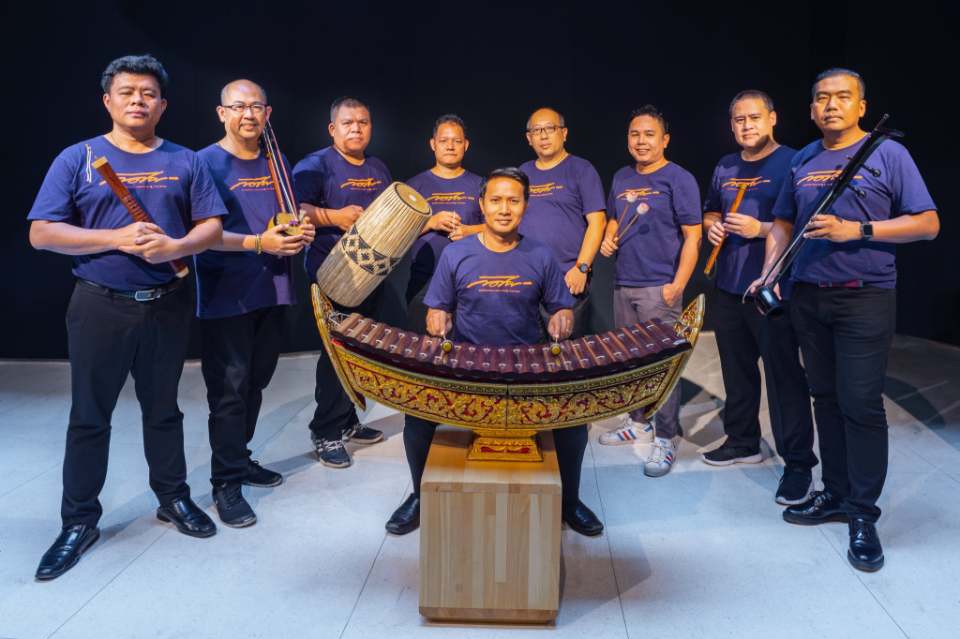
"Kor Phai" is a contemporary Thai music band that has been around for over 3 decades. It was started by Anand Nakkhong who gathered his friends from different educational institutions who were amateur musicians with talent to join the band since the 100th anniversary of the birth of Luang Pradit Phairoh (Sorn Silpabanleng) in 1981. They started calling themselve "Kor Phai" band and performed on stage at the Bangkok Bank's Music Center for the first time on May 6, 1983. The musicians from the founding era included Anand Nakkhong, Sahat Chanchalerm, Prasarn Wongwirojrak, Apichai Liamthong, Piyanuch Nakkhong, and Worodom Imsakul.
In late 1983, Kor Phai joined the Thai music competition for national security organized by the Luang Pradit Phairoh (Sorn Silpabanleng) Foundation and the National Security Coordination Federation at the National Theatre. The result was that they won first place in both the ensemble and all-instrument singer categories. Since then, Kor Phai's reputation has been widely known. The musicians who competed were Piyanuch Nakkong, Chaiphak Phatcharinda, Prasarn Wongwirojrak, Apichai Liamthong, Worodom Imsakul, Atsadawut Sakrik, and Ekkarat Wongkiatkhajorn. Later, the Korpai Band added more Thai and international musicians, and the band’s working style changed continuously, even though it was not a professional band. It has always operated as an amateur band, and up until now, there are about 15 main musicians.
Korpai Band is interested in creating works directly in terms of music and cultural activities. It has collaborated with many organizations to do volunteer work, especially the Luang Pradit Phairoh Foundation (Sorn Silpabanleng), with which it is deeply connected. It has been working on producing albums of traditional Thai music since 1991, and they have continued to be popular with music lovers up until now. Over the past 30 years, Korpai Band has released many CDs and has performed many concerts both in Thailand and abroad. It has also organized lectures and demonstrations, organized workshops on Thai music for interested people, and has been a part of pushing for the establishment of many national Thai music competitions. Korpai Band presents a wide range of musical styles.
Although it started with traditional Thai music, it has evolved into contemporary music, folk-pop, popular music, jazz fusion, Asian mix, and experimental music. Korpai Band has composed music for Thai films, documentaries, performances, stage plays, experimental dances, and presentations at various festivals. In particular, for studio work, it was involved in composing music for the film The Overture, a highly successful Thai film that was internationally acclaimed and received numerous awards, including Best Original Score. Korpai Band has also composed music for other films, such as The Legend of Suriyothai, The Haunted Drum The Legend of King Naresuan the Great, and the Thai PBS television drama The Overture in 2011.
วงกอไผ่ เป็นวงดนตรีไทยร่วมสมัยที่มีอายุยาวนานกว่า 3 ทศวรรษ เริ่มต้นโดย อานันท์ นาคคง ได้รวบรวมเพื่อน ๆ นักเรียนต่างสถาบันการศึกษาที่เป็นนักดนตรีสมัครเล่นที่มีความสามารถมาร่วมงาน ตั้งแต่ครั้งวาระครบรอบ 100 ปีเกิดของท่านครูหลวงประดิษฐไพเราะ (ศร ศิลปบรรเลง) ใน พ.ศ.2524 และได้ใช้ชื่อวงดนตรี "กอไผ่" ขึ้นเวทีศูนย์สังคีตศิลป์ ธนาคารกรุงเทพเป็นครั้งแรก เมื่อ 6 พฤษภาคม 2526 นักดนตรียุคก่อตั้ง อาทิ อานันท์ นาคคง, สหรัฐ จันทร์เฉลิม, ประสาร วงศ์วิโรจน์รักษ์, อภิชัย เลี่ยมทอง, ปิยะนุช นาคคง, วโรดม อิ่มสกุล เป็นต้น
ในปลายปี 2526 นั้น วงกอไผ่ได้เข้าร่วมประกวดการแข่งขันดนตรีไทยเพื่อความมั่นคงแห่งชาติ จัดโดยมูลนิธิหลวงประดิษฐไพเราะ (ศร ศิลปบรรเลง) และสหพันธ์ประสานงานเพื่อความมั่นคงแห่งชาติ ณ โรงละครแห่งชาติ ผลคือได้รับรางวัลชนะเลิศทั้งประเภทรวมวงและนักร้องนักดนตรีทุกเครื่องมือ และนับแต่นั้นเป็นต้นมาชื่อเสียงของกอไผ่ ก็เป็นที่รู้จักกันในมุมกว้าง นักดนตรีที่ประกวดได้แก่ ปิยะนุช นาคคง, ชัยภัค ภัทรจินดา, ประสาร วงศ์วิโรจน์รักษ์, อภิชัย เลี่ยมทอง, วโรดม อิ่มสกุล อัษฎาวุธ สาคริก และ เอกราช วงศ์เกียรติขจร ต่อมา วงกอไผ่ได้สมาชิกนักดนตรีไทยและนักดนตรีสากลเพิ่มเติมขึ้นอีกมาก หมุนเวียนเปลี่ยนรูปแบบการทำงานไปเรื่อยๆแม้ไม่ใช่วงดนตรีโดยอาชีพ ดำรงตนในฐานะวงดนตรีสมัครเล่นมาตลอด จนถึงปัจจุบัน มีนักดนตรีหลัก ๆ ประมาณ 15 คน
วงกอไผ่สนใจการสร้างสรรค์ผลงานทั้งทางด้านดนตรีโดยตรงและกิจกรรมทางศิลปวัฒนธรรม โดยได้ร่วมมือกับหลายองค์กรในการทำงานอาสาสมัคร โดยเฉพาะมูลนิธิหลวงประดิษฐไพเราะ (ศร ศิลปบรรเลง) ซึ่งมีความผูกพันกันอย่างยิ่ง ได้ทำงานผลิตอัลบั้มเพลงไทยเดิมมาตั้งแต่ 2534 และยังคงได้รับความนิยมจากนักฟังเพลงอยู่เสมอจวบจนปัจจุบัน ตลอดระยะเวลากว่า 30 ปี วงกอไผ่ได้ออกซีดีมาหลายชุด และได้จัดการแสดงคอนเสิร์ตมากมายหลายครั้งทั้งในไทยและต่างประเทศ รวมถึงได้จัดการบรรยายประกอบการสาธิต จัดเวิร์คช็อปเกี่ยวกับดนตรีไทยให้แก่ผู้สนใจ และเป็นส่วนหนึ่งในการผลักดันให้มีงานประกวดดนตรีไทยระดับชาติหลายครั้ง
วงกอไผ่นำเสนอแนวดนตรีที่หลากหลาย แม้เริ่มต้นจากดนตรีไทยแนวประเพณีแบบแผน ก็ได้พัฒนาไปยังดนตรีแนวร่วมสมัย ดนตรีโฟล์ค-ป็อป, ดนตรีสมัยนิยม, ฟิวชั่นแจ๊ส, เอเชี่ยนมิกซ์ และดนตรีทดลอง วงกอไผ่ได้เข้าไปทำดนตรีให้กับทั้งภาพยนตร์ไทย สารคดี กิจกรรมการแสดง ละครเวที นาฏศิลป์ทดลอง และพรีเซ็นเตชั่นตามงานเทศกาลต่าง ๆ โดยเฉพาะงานสตูดิโอนั้น ได้เข้าไปมีส่วนร่วมในการทำดนตรีให้กับภาพยนตร์เรื่อง โหมโรง ซึ่งเป็นภาพยนตร์ไทยที่ประสบความสำเร็จเป็นอย่างมาก โดยเป็นภาพยนตร์ที่ได้รับคำชมจากนักวิจารณ์ในระดับนานาชาติและได้รับรางวัลมากมาย รวมถึงรางวัลดนตรีประกอบภาพยนตร์ยอดเยี่ยม นอกจากนี้ วงกอไผ่ยังได้เข้าไปร่วมทำดนตรีให้กับภาพยนตร์อื่น ๆ อาทิ สุริโยไท เปิงมาง กลองผีหนังมนุษย์ ตำนานสมเด็จพระนเรศวรมหาราช และ ละครโทรทัศน์เรื่องโหมโรง ของไทยพีบีเอสในปี 2554


